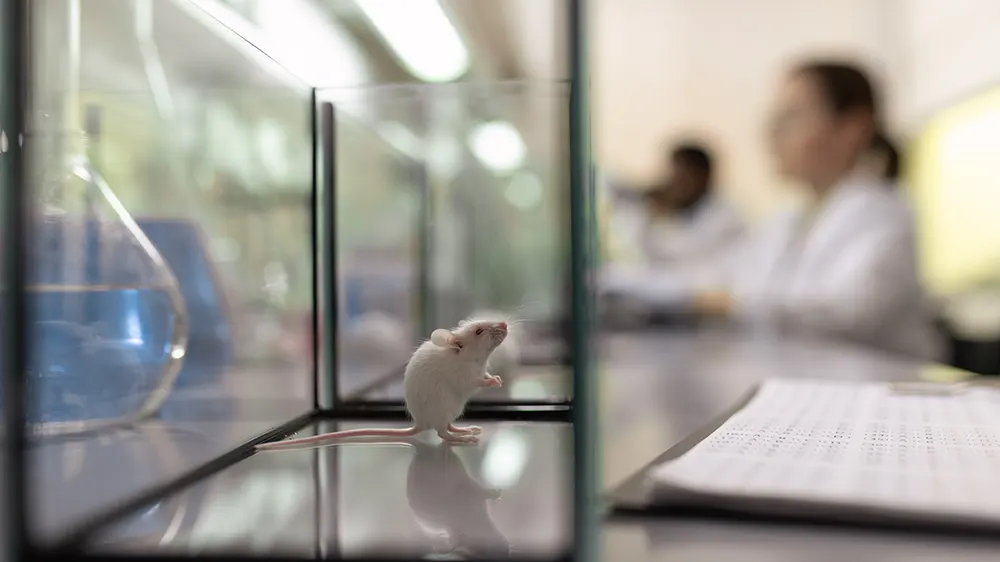In research, things do not always go according to plan. Sometimes that leads to new discoveries.

In the study, the researchers found that the mice that had a double mutation were completely healthy, even though they had a mutation that usually causes the rare disease Stormorken syndrome. Illustration image: Colourbox.com

Sometimes scientists arrive at new findings and discoveries by chance.
That was the case when Thilini Gamage was to carry out one of the studies in her doctoral work with Professor Eirik Frengen at the Institute of Clinical Medicine, University of Oslo.
They study gene variation and mutations that cause rare genetic diseases. A mutation is a permanent change in the genetic material.
Some mutations can lead to the development of diseases.
The researchers lost some of the mice they were going to study
The researchers established a mouse model to study the effect of a mutation in the mice.
The plan was to study the significance of one specific mutation linked to a very rare disease called Stormorken syndrome. The disease causes severe headaches, muscle pain, muscle cramps and weak muscles, in addition to an increased risk of blood clots and prolonged bleeding.
However, things did not go according to plan.
"One of the two mice that had received the mutation turned out to be completely healthy, while the other mouse died", Gamage says.
"Mice often surprise us"
Subsequently, the researchers had two different mouse models, both with the same mutation. They were surprised that one group of mice appeared completely healthy, as if they had not acquired the mutation.
"There was something strange about these apparently healthy mice. We investigated them thoroughly", Gamage says.
"We expected that there would be a fairly large effect of the mutation in all the mice, but mice often surprise us", Frengen points out.
Two different mutations cancelled each other out
The apparently healthy mice were found to have the same mutation as the sick mice.
However, in addition, these mice that appeared healthy had one more mutation. They thus had a double mutation.
"We discovered that the effect of the first mutation was completely reversed by the second mutation in these mice", Gamage explains.
The two mutations cancelled each other out.
The mice were healthy
The researchers were surprised by what they had discovered.
"The mice with the double mutation had none of the symptoms that characterise Stormorken syndrome", Gamage says, and continues:
"They were completely healthy, even though they had the mutation that usually causes the disease".
The activation of a protein is the explanation
The coincidences that led Gamage and Frengen to study mice with two genetic mutations have provided new insight into how the mutations affect a protein in the cells.
"Instead of the protein being activated only when it should, the mutated protein has an extended structure and is activated all the time. This leads to changes in important processes in the body and is the molecular mechanism behind Stormorken syndrome", Frengen explains.
"Mutation number two caused the protein to fall back to its more folded inactivated structure. The protein was then only activated when it should be activated", the professor adds.
The study shows that this mechanism explains why the mice with the double mutation were healthy.
The findings advance the field of research
According to the researchers, the new findings confirm the mechanism behind the activation of the protein. Moreover, the study shows that the constitutive activation of the protein is the mechanism that causes Stormorken syndrome.
"We have now established why there is a connection between the mutation, the activation of the protein and Stormorken syndrome. The findings in our study mean that we can move on and concentrate our efforts on studying new questions in this field of research, Frengen says.
"Sometimes it's a good thing that not everything goes as planned"
Gamage explains that one of the things she has learned from the study is the importance of being open to new possibilities.
"I am glad that we had an open mind and the opportunity to explore what could be behind the fact that the other mice seemed healthy", the researcher says, and continues:
"I think it is important for research in general. You must not stop exploring. It turns out that sometimes it's a good thing that not everything goes as planned".
The research is an interdisciplinary collaboration between researchers at the University of Oslo and biophysics researchers at the Johannes Kepler University Linz in Austria and at the Magnetic Resonance Center, University of Florence in Italy.
Reference
Thilini H. Gamage et al., A single amino acid deletion in the ER Ca2+ sensor STIM1 reverses the in vitro and in vivo effects of the Stormorken syndrome-causing R304W mutation.Sci. Signal.16,eadd0509(2023). DOI: 10.1126/scisignal.add0509.






